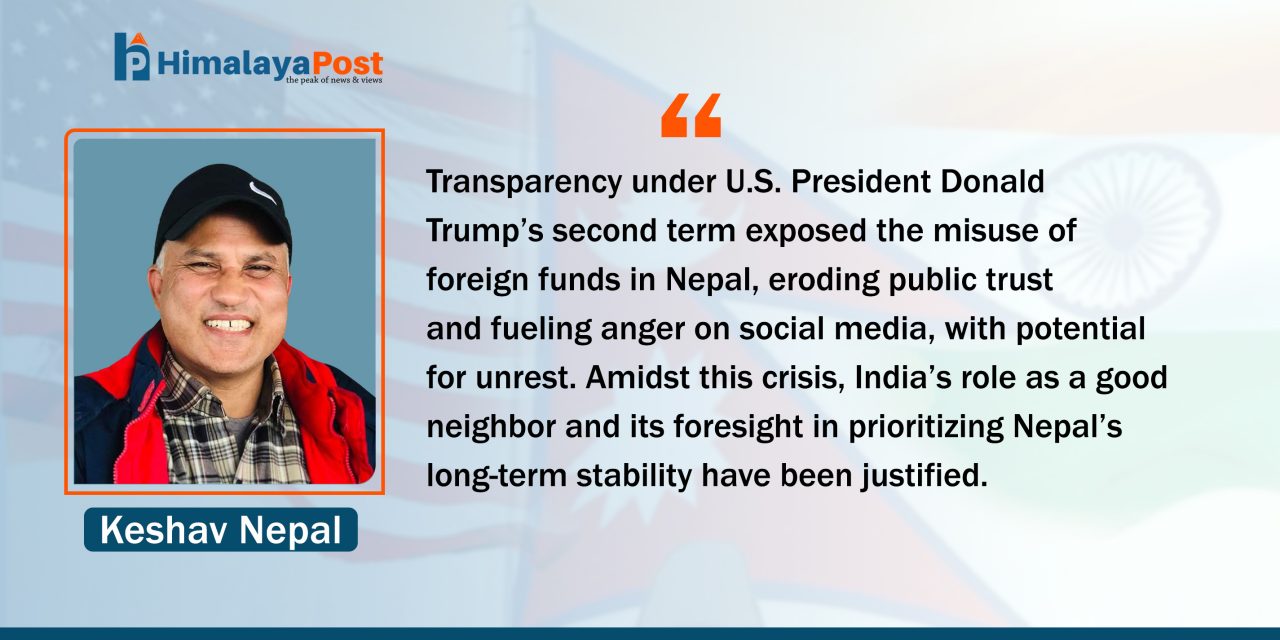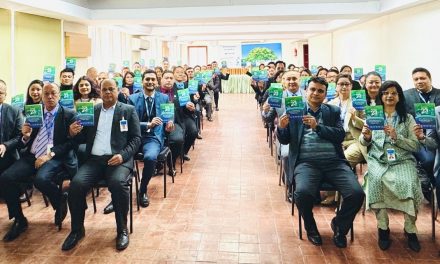– Keshav Nepal
India and Nepal share a relationship that transcends political boundaries and geographical demarcations. Rooted in centuries-old religious, cultural, linguistic, and people-to-people ties, the bond between these two nations is far more profound than the occasional diplomatic hiccups that arise. However, the nature of politics often tends to provoke historical and diplomatic relations, and the recent history of Nepal-India relations is no exception. Despite these challenges, India has consistently demonstrated its commitment to being a good neighbor, offering guidance and support to Nepal during critical junctures in its history. Yet, the actions of certain Nepali politicians, influenced by external forces, have at times strained this relationship, leaving the people of Nepal disillusioned and distrustful of their leaders.
The Unbreakable Ties
The relationship between India and Nepal is unique, characterized by shared traditions, beliefs, and values. Hinduism, which is practiced by over 80% of Nepal’s population, serves as a unifying force between the two nations. The cultural exchange between India and Nepal is evident in festivals, rituals, and religious practices that are celebrated with equal fervor on both sides of the border. Linguistic ties further strengthen this bond, with Nepali and Hindi languages sharing similarities and facilitating communication between the people of the two countries. The open border policy between India and Nepal allows for free movement, fostering deep people-to-people connections that have stood the test of time.
These ties are far more valuable than any political or geographical demarcations. They form the bedrock of a relationship that has endured for centuries, even as political landscapes have shifted and evolved. However, the actions of politicians, often driven by short-term gains or external influences, have at times threatened to undermine this sacred bond.
The Constitution of 2015: A Missed Opportunity
The promulgation of Nepal’s constitution in 2015, though a landmark moment, became a missed opportunity due to external influences and political missteps. India, as a well-wisher and neighbor, urged Nepal to reflect its Hindu-majority ethos, emphasizing unity and inclusivity. Given that over 80% of Nepal’s population is Hindu, India advised against adopting secularism in the constitution and urged Nepali leaders to incorporate the religious ethos and sentiments of the majority. Indian Prime Minister Narendra Modi, during his visit to Nepal, addressed the Nepali parliament and emphasized the importance of unity and inclusivity. Similarly, then- Minister of External Affairs, Sushma Swaraj visited Nepal and highlighted the potential long-term consequences of certain constitutional provisions that did not reflect the aspirations of the majority.
India’s concerns were not driven by interference but by a genuine desire to see Nepal thrive as a stable and harmonious nation. The then-Foreign Secretary of India, S. Jaishankar (now Minister of External Affairs), also visited Nepal to reiterate the importance of addressing these issues. However, the dogmatic approach of Nepali politicians, who were seemingly influenced by external forces, with heavy funding of Christian missionaries, led them to disregard these well-intentioned suggestions. The result was a constitution that failed to fully resonate with the majority of the population, sowing seeds of discontent that continue to simmer beneath the surface.
The Role of External Influences
The transparency brought about by the second term of U.S. President Donald Trump, beginning in January 2025, shed light on the extent of external influence in Nepal’s constitutional process. President U.S. President Donald Trump’s administration unveiled detailed records of USAID funding, including the names of recipients and the purposes for which the funds were used or misused. Transparency under President Trump’s second term exposed the misuse of foreign funds in Nepal, eroding public trust and fueling anger on social media, with potential for unrest.Transparency under U.S. President Donald Trump’s second term exposed the misuse of foreign funds in Nepal, eroding public trust and fueling anger on social media, with potential for unrest. Amidst this crisis, India’s role as a good neighbor and its foresight in prioritizing Nepal’s long-term stability have been justified.
This blatant manipulation of Nepal’s democratic process has left the people disillusioned and angry. Trust in politicians and political parties has eroded, and the rage against them is increasingly evident on social media platforms. While this anger has so far been confined to virtual spaces, the potential for it to spill over into physical demonstrations and anarchy cannot be ignored. The situation is a ticking time bomb, and the consequences of such unrest could be catastrophic for Nepal.
India’s Role as a True Friend
Amidst this turmoil, India’s role as a good neighbor and true friend has become even more apparent. India’s concerns and suggestions during the constitution-making process were rooted in a deep understanding of Nepal’s cultural and religious fabric. The recent visit of Prime Minister Narendra Modi to the United States in mid-February 2025 further underscored India’s commitment to regional stability. During this visit, President Trump gestured to Prime Minister Modi to take a proactive role in addressing the issues of neighboring countries, including Nepal.
With the termination of USAID funding to Nepal, the external influences that once manipulated Nepali politics have waned. The mercenary politicians who once thrived on foreign funds now find themselves hapless as people have no trust on them. In this vacuum, India remains the only reliable and close friend capable of guiding Nepal back onto the path of stability and progress. India’s historical, cultural, and religious ties with Nepal position it uniquely to play this role.
The Way Forward
The people of Nepal are at a crossroads. Their trust in politicians has been shattered, and their faith in the democratic process has been shaken. The anger and frustration brewing among the masses are palpable, and the need for genuine leadership has never been more urgent. India, as a good neighbor, can help Nepal navigate this challenging period by fostering dialogue, promoting inclusivity, and encouraging leaders who prioritize the welfare of the people over personal or external interests.
The bond between India and Nepal is too strong to be broken by the short-sighted actions of a few. It is a bond forged by shared history, culture, and religion—a bond that has withstood the test of time. As Nepal seeks to rebuild and restore the trust of its people, India stands ready to support its neighbor in every possible way. Together, the two nations can overcome the challenges of the present and build a future that honors the deep and enduring ties that unite them.
In conclusion, while politicians may come and go, and external influences may rise and fall, the relationship between India and Nepal is eternal. It is a relationship built on mutual respect, shared values, and an unbreakable bond that transcends borders. As Nepal looks to the future, it can take solace in the fact that it has a true friend in India—a friend who will always stand by its side, through thick and thin.





